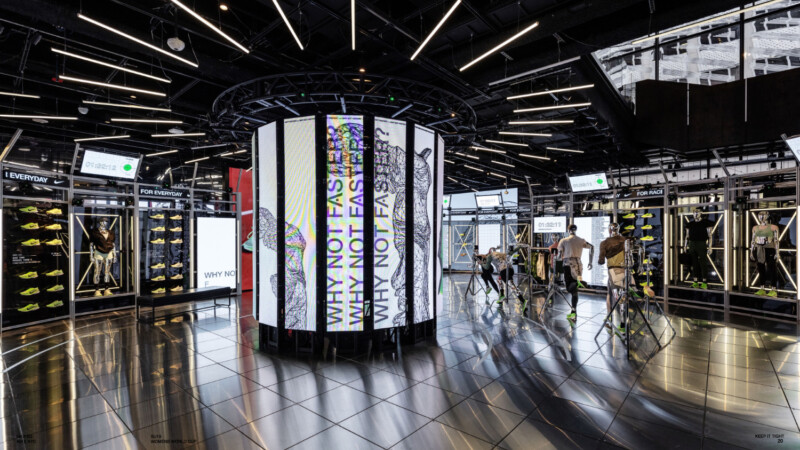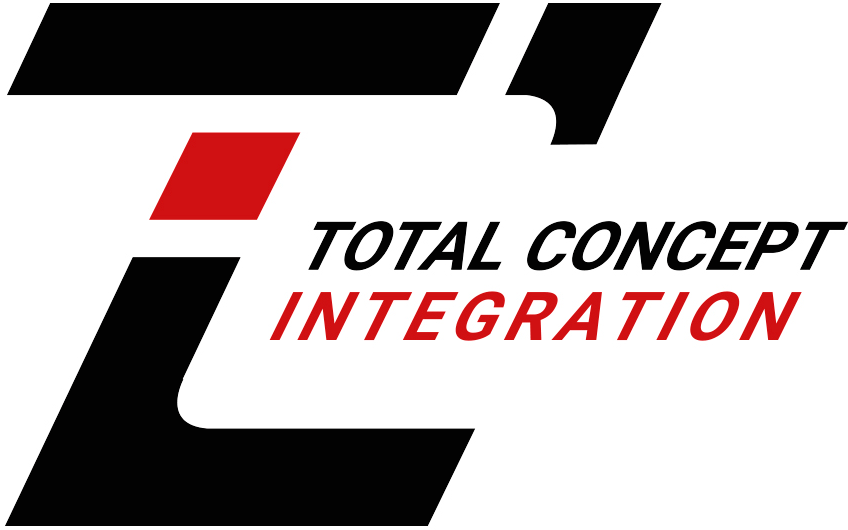What Is Digital Signage?
Digital signage is now all around us. It takes electronic signage to a new level with LCD, LED, and projection technology. Your business can thus leverage new interactive capabilities to connect with consumers, visitors, and employees. Displays can individually showcase text, animation, or video content and are centrally managed as part of a digital signage network.
What Is the Purpose of Digital Signage?
Digital signage generally serves as a medium to communicate information and advertising messages. It’s used at hotels, restaurants, and corporate facilities, as well as stores, museums, stadiums, and all kinds of public places. A multimedia advertisement may be displayed on the screen at a bus station or another outdoor location. You might also see it where you bought a movie ticket or while navigating an airport.
As of 2021, the digital signage market is estimated to be valued at around USD 16.3 billion globally. Assuming a compound annual growth rate of 11.2%, this is projected to hit USD 27.8 billion by 2026.1 Innovations such as organic light emitting diode (OLED), electronic paper displays (EPD), and quantum dot LED (QLED) displays are helping to drive growth.
These technologies are providing the business world with many opportunities. Signage is no longer passive. It’s now capable of driving connection and interaction while assimilating content from multiple sources at once.
The potential of digital signage is limitless. We’ll provide greater detail on its evolving nature and potential.
What Is Digital Signage from a Holistic Perspective?
Many people view digital signage as the hardware equipment that is visible in front of them, but it’s much more complex than that. Digital signage consists of a variety of components that help define its roles and functions, whether it drives an advertising display, an exhibition, or a wayfinding system.
It comprises content, such as video, images, audio, text, and graphics, to relay messages and stories. Hardware such as screens, cameras, mountings, printers, and even payment devices play a major role. Digital signage solutions also consist of software, which forms a backbone for digital infrastructure that enables businesses to create, implement, and manage content as well as analyze its impacts.

What Kind of Content Can Digital Signage Include?
Content often refers to what is visible on electronic displays. It’s true that text, video, pictures, animated graphics, and even audio are forms of content, but content is also a combination of media chosen and integrated to communicate a message. The target audience is often being told a story, whether they’re briefly passing the display or seeking information from the source.
The content can be managed and even personalized through integrations with corporate networks and systems. Your organization can reach a larger audience in a more effective way. Digital signage can serve various roles and functions and is present throughout our society. The content it can manage and distribute includes:
- Information for the Public: They can include maps, wayfinding assistance, and location-specific data such as real-time news, traffic, and weather.
- Corporate Communications: They provide company-wide messaging and news that impacts employees, managers, and partners; and health and safety information.
- Product Marketing: They display example/application photos, pricing, demonstrations, and, in the case of food marketing, ingredients, recipes, and nutritional facts.
- User Experience: Digital signage can be used for interpretive displays at museums, exhibitions, parks, zoos, and other points of interest.
- Tourist Assistance: They can include information on points of interest, cities or districts, and wayfinding guidance on video walls or digital displays.
- Retail Information: They help customers navigate stores or influence their behavior to increase dwell time and assist in decision making at, for example, a dressing room in a fashion outlet.
- Restaurant Self-Service: From self-ordering kiosks to digital menus that can be updated any time, the customer experience at a restaurant can be fully digitized.
- Enhanced Marketing: Digital signs display promotions or provide ambiance for a location; they can contain a range of interactive and personalized features to engage consumers.
- Exhibition/Trade Show Support: Digital signage supports anything from visitor registration and attendee networking to interactive communication on products and services.
- Education: Digital boards are used in the classroom or for wayfinding in school buildings, or as exhibitional aids in libraries and other gathering areas.
What Digital Signage Hardware Do I Need?

There are more hardware options than ever before to support digital signage. It’s no longer effective to display pre-configured content on a simple screen. Some of the hardware technologies to integrate with your application can include:
- Touch Screens: More specifically, digital signage is increasingly relying on multi touch screens to allow users to interact with content. One or more fingers can be used during interactions. Some screens allow two or more people to use them at once.
Options include capacitive touch screens that register current via embedded sensors. These tiny sensors are used in smartphones and tablets. Infrared technology is another option. It detects when an object contacts the screen while supporting a variety of materials.
- Beacons/RFID/Cameras: A variety of context-aware technologies are available. These include beacons that broadcast a URL or unique identifier to link the display with a product or mobile device. Beacons are assigned to individual items; they can be sent as notifications as well. They’re effective at creating automated tour guides or providing a proximity marketing experience.
Unique IDs are also captured by radio frequency identification (RFID) and near field communication (NFC) readers. Consumers can swipe a membership card, for example, and see their information on-screen. Age, gender, and other demographic data can be used. Additionally, these technologies leverage the Internet of Things to process information, assess the environment, and deliver messages based on numerous cues.
- Connected Devices: Cameras, televisions, lights, and other devices can be connected to information and prompts relayed via the internet. Information is fed directly to and from digital services to control any connected object. Advanced touch screens can react to the placement of tangible objects, track their movement, and let users interact with the system. People can obtain information and even design or customize a product.
How Can Digital Signage Software Help Enhance My Application?

Software helps drive the current generation of interactive digital signage. It makes an array of functions possible, such as scrolling through product listings, linking to users’ social media accounts to share photos, and otherwise interacting with the system. Software enables data collection, analytics, and a host of interactive functions. The design and layout of your display, storyboard, and multimedia format are also controlled by software applications.
Digital signage software is a highly diverse category. Depending on the application, the software capabilities may differ. The primary purpose of a digital signage solution may be:
- Content Creation
- Device Management
- Content Management/Distribution
- Performance Measurement
- Data Analytics
In addition, the software you choose and implement can support the required level of collaboration, as well as allow remote deployment of specific content.
How Does the Future of Digital Signage Software Look?
Software is currently the focus of the most significant signage innovations. It is expanding the level of potential interaction. Users can not only interact with digital signage via touch, but, depending on the software, it may enable speech recognition, motion sensing, use of tangible objects, gesture recognition, and remote actions.
Virtually any kind of human-machine interaction is possible with digital signage software. Innovations in this area are sure to continue to advance in the coming years.
Redefining Connection
Digital signage software is also about connectivity. A user interface allows people to upload and manage content. It is typically then distributed to a media player.
The usage model is going beyond the traditional content management system (CMS) to include third-party sources such as the cloud. However, there are many possible sources that can be used to connect with and retrieve content.
These sources may be a stand-alone CMS such as WordPress or an offline source like Microsoft Excel. Any social media site can be a source as well. Organizations can also connect to content from a variety of third-party services, devices, and apps. They can also connect via an application programming interface (API) to devices, business systems, or any type of data source.
Sensing the Audience
Rather than passively displaying content, digital signage captures information about people and their behaviors. Every interaction is logged. The system can react to the items a user selects, the videos they play, and the scenes they view.
Weather and location data can be integrated as well. Scanned QR codes, RFID/NFC readers, and even webcams can work with the system. Some webcams can detect expressions or gender so the software can create a personalized experience.
The software backbone isn’t limited to sensing. It can provide a complete analytics system. The insights obtained may help you manage how your business operates, reaches its audience, and markets its products and services.
Let TCI Help with Screens, Tickers, and Equipment

We’re here to help with the hardware aspect of your digital signage initiatives. Some of our specialties include the design, engineering, development, and installation of LED screens as well as supporting servers.
Our digital experience professionals can help with augmented reality systems. They can add 3D elements into your video stream or create a virtual reality experience for your audience. Plus, our team can be a content creation collaborator. Capabilities we can add include motion graphics, video backgrounds, and animations.
Other specialties include video switching, media playback, remote camera control, and event production. Plus, we can enable live audience interactions such as streaming chats, live voting and donations, and live Q&As. To learn about these, our rigging services, and how we can help integrate the screens and hardware your organization needs to enhance its digital signage capabilities, call 855-950-0824 today!



